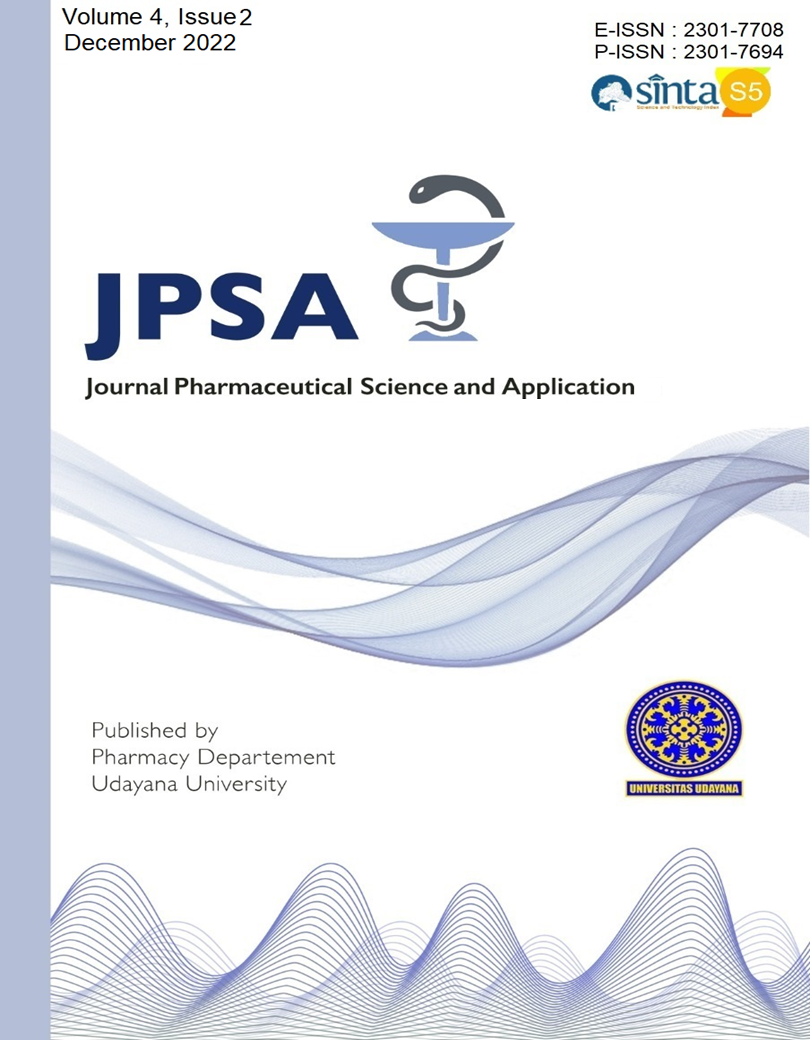PERCEPTION OF HYPERTENSION PATIENTS ON THE USE OF HERBAL DRUGS IN COMPLEMENTARY THERAPY OF HYPERTENSION IN DENPASAR CITY
Abstract
Backgrounds: Hypertension or Silent killer is a condition when the systolic pressure is measured 140 mmHg or the diastolic pressure is measured 90 mmHg. The prevalence of hypertension in Denpasar City is still quite high, with an estimated 177,627 hypertension sufferers in Denpasar City in 2019. One alternative treatment that can be an option to lower blood pressure is herbal therapy. Herbal therapy is complementary therapy using medicinal plants. Objective: The purpose of this research is to identify the characteristics of respondents, the perception of hypertension sufferers on the use of herbal medicines in the complementary therapy of hypertension and the types of herbs used in complementary therapy of hypertension. The type of research used is descriptive research with using a quantitative approach. Methods: Sampling technique is purposive sampling. The research sample is hypertensive patients who use conventional and complementary herbal combination therapy, age >17-65 years, using a research instrument in the form of a questionnaire. Data analysis is carried out using SPSS software. Results: The majority of hypertension sufferers are in the age range of 46-65 years (elderly) as many as 71 people (71%), female as many as 57 people (57%). Respondents who have a positive perception of 55% and who have a negative perception of 45%. The types of herbs used are cucumber, melon, watermelon, celery leaves, bay leaves, moringa leaves, meniran leaves, garlic and Ginger. Conclusion: The majority of hypertensive patients perceptions of drug use herbs in the complementary therapy of hypertension has a positive value. That means, respondents believe that herbs have benefits and can help reduce treatment costs. The most widely used types of herbs are: cucumber (40%) and celery leaves (30%).
Keywords: Hypertension; Perception; Complementary Therapy
Downloads

This work is licensed under a Creative Commons Attribution 4.0 International License.
Authors who publish with this journal agree to the following terms:
Authors retain copyright and grant the journal right of first publication with the work simultaneously licensed under a Creative Commons Attribution License that allows others to share the work with an acknowledgment of the work's authorship and initial publication in this journal.
Authors are able to enter into separate, additional contractual arrangements for the non-exclusive distribution of the journal's published version of the work (e.g., post it to an institutional repository or publish it in a book), with an acknowledgment of its initial publication in this journal.
Authors are permitted and encouraged to post their work online (e.g., in institutional repositories or on their website) prior to and during the submission process, as it can lead to productive exchanges, as well as earlier and greater citation of published work. (See The Effect of Open Access).

This work is licensed under a Creative Commons Attribution 4.0 International License.


 HOME
HOME
















